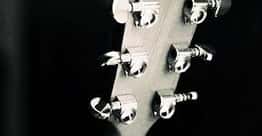The Behind-The-Scenes Drama That Sank 'seaQuest DSV'
'SeaQuest' Joined A Glut Of Other TV Sci-Fi Shows Built On The Success Of 'Star Trek: The Next Generation'
Before the 1990s, science fiction on TV was a fairly niche genre. Sure, there were success stories like Voyage to the Bottom of the Sea and Lost in Space (both produced by legendary Hollywood mogul Irwin Allen), but television airwaves were traditionally dominated by more earthbound cop shows, Westerns, and sitcoms. Voyage to the Bottom of the Sea only lasted four seasons; Lost in Space a mere three. Even the original Star Trek had a tough time in its original run and was canceled after three tumultuous seasons. The expense of sci-fi tended to not match up with audience demand, making it a tough sell for networks looking at profit margins.
All of that changed with the successful syndicated launch of Star Trek: The Next Generation in 1987. TNG had grown into an era-defining hit by 1993, reaching 11 million households at its peak. When TNG left the air in 1994 (one year after the premiere of seaQuest) and made the leap to motion pictures, TV was stuffed with sci-fi stories. The X-Files, Babylon 5, Quantum Leap, Sliders, and countless other shows on both broadcast and cable TV were competing for audiences.
Into that fray leaped Steven Spielberg's Amblin Entertainment production company, which had what it thought was a can't-miss idea: mixing Star Trek with Voyage to the Bottom of the Sea.
- Photo: NBC
'SeaQuest DSV' Took The 'Star Trek' Format And Moved It Underwater
SeaQuest was the brainchild of Rockne S. O'Bannon, who came to prominence as the writer of the 1988 cult classic sci-fi movie Alien Nation - a buddy-cop action film where one of the cops happens to be an alien. Alien Nation went on to become a TV series on the Fox network, without O'Bannon's involvement. His next big idea was seaQuest, a swashbuckling adventure series about a future (2018, to be exact) in which humanity had colonized not space, but the oceans on this very planet.
There are clear similarities between Star Trek and seaQuest, beyond the blatantly derivative title. Star Trek's United Federation of Planets would become seaQuest's United Earth Oceans (or UEO). Grumpy, stern, moralistic, but lovable Captain Jean-Luc Picard would become grumpy, stern, moralistic, but lovable Captain Nathan Hale Bridger. In place of boy genius Wesley Crusher, seaQuest had boy genius Lucas Wolenczak (played by Jonathan Brandis, at the time a teen idol thanks to roles in the popular kids' films Sidekicks and Ladybugs). Motherly Dr. Beverly Crusher morphed into motherly Dr. Kristin Westphalen. Hotshot young first officer William Riker became hotshot young first officer Jonathan Ford. You get the point.
The similarities go on and on, but as is often the case in the entertainment industry, a huge hit series like TNG breeds imitators hoping to carve a bit of profit from the trend. But no one would dismiss seaQuest as a mere ripoff, thanks to the involvement of one of the most powerful people in Hollywood.
- Photo: NBC
Steven Spielberg Was Executive Producer During The First Two Seasons
The idea caught the attention of Steven Spielberg, who could seemingly make any idea a success just by putting his name on it as a producer (Back to the Future, Poltergeist, Gremlins, and countless more). Even though Spielberg's last major foray into broadcast TV, the anthology Amazing Stories, failed to catch on after NBC committed to over 44 episodes in 1985, his presence practically guaranteed seaQuest would be made, and with a substantial budget behind it.
NBC paid Universal Television and Amblin Entertainment $1 million an episode (at the time unheard of) as a license fee. The large price tag was the result of not only Spielberg's pedigree, but also the sheer expense of making a series about a futuristic submarine. Each episode of seaQuest cost $1.5 million to make, and NBC ordered 22 episodes for the first season, far more than the 13-episode industry standard for a brand-new show at the time. Universal also deftly used the threat of taking seaQuest into first-run syndication (a model proven successful by, you guessed it, Star Trek: The Next Generation) to strong-arm NBC into terms that were financially onerous and incredibly risky.
- Photo: NBC
'Jaws' Actor Roy Scheider Was Tapped To Play The Captain
Spielberg was able to obtain the involvement of Roy Scheider, the lead actor from his first blockbuster, the similarly ocean-bound thriller Jaws, as Captain Nathan Bridger. Scheider had never done a TV series before and was reluctant to sign on to seaQuest.
“I had my qualms," Scheider said in 1993. "If it’s just a submarine captain, then you don’t need me to do that, and I don’t want to do that. But if the guy in time could become a cross between Jacques Cousteau and Popeye, it might be a character worth doing for some time."
- Photo: John F. Williams / US Navy
Steven Spielberg Hired Robert Ballard To Be The Show's Scientific Expert
Steven Spielberg also hired ocean physicist and engineer Robert Ballard, famed for finding the wreck of the Titanic, to be the show's scientific consultant and resident futurist. Ballard was himself a big personality and genuine advocate for colonization of the ocean, which made him practically a co-creator of the series. Ballard was so influential on the initial conception of seaQuest that Scheider patterned much of his Bridger character after Ballard.
Ballard also ended up hosting a brief segment during the end credits where he explained the real science behind the outlandish stories that made up seaQuest's first season. Chief among them were the numerous plots that revolved around what might be seaQuest's most enduring character: Darwin, the talking dolphin.
- Photo: NBC
Contrary To Popular Belief, Darwin The Dolphin Was An Animatronic Creation
If seaQuest had to have a cast member inspired by every popular character on Star Trek: The Next Generation, who would be its Data, the beloved, guileless android Pinocchio always yearning to be a real boy? This was a tricky question to answer, because seaQuest (at least initially) was to take place in a realistic future without aliens, androids, time travel, or other elements of space-bound sci-fi. After all, they had a real scientist (Robert Ballard) giving mini-lectures during the credits. There was no room for flights of fancy like robot officers or pointy-eared extraterrestrials.
The solution to the Data problem was Darwin, a dolphin given the gift of rudimentary speech thanks to a translation system designed by genius Lucas Wolenczak. Darwin would "speak" in choppy, child-like sentences such as "Darwin swim" or "Darwin love Bridger." Adult critics in 1993 saw Darwin for exactly what he was, an adorable bit of pandering to kids (and kids at heart). There's a reason Darwin is the biggest thing people remember from seaQuest (other than Jonathan Brandis).
What many people might not know is that Darwin was an animatronic creation and not a real, trained dolphin. The expensive, sophisticated nature of the puppet helped secure the illusion. The voice of Darwin was provided by noted voice actor Frank Welker, whose extensive resume includes turns as Garfield, Scooby Doo, and Megatron in Transformers: Dark of the Moon.
- Photo: NBC
The Production Of 'seaQuest' Was Riddled With Conflict
Naturally, the hefty expense of producing and distributing seaQuest DSV led to commensurately heavy expectations of ratings success. "SeaQuest is clearly the biggest (television) undertaking this studio has ever had, in terms of size and production and economics,” Universal Television president Tom Thayer told the L.A. Times on the eve of seaQuest's splashy debut on Sunday nights at 8 pm.
No expense was spared to guarantee seaQuest would be a huge hit. Exteriors were filmed in Malibu, CA. Irvin Kershner, director of The Empire Strikes Back and Robocop 2, was hired to helm the pilot. A set the L.A. Times described as "the size of the Queen Mary" was built on Universal Studios' Stage 28. Talent contracts to big names like Roy Scheider and profit participation deals for behind-the-scenes figures like Spielberg meant it would take significant viewership (and accompanying advertising revenue) to get into the black. That left NBC skittish and made every decision made about the show 10 times more difficult to make.
With Spielberg off in Poland filming Schindler's List, there was no firm hand guiding seaQuest's production in Los Angeles. According to a story published in the L.A. Times, Scheider clashed with executive producer and showrunner Tommy Thompson over the creative vision for the show. Scheider wanted the show to be quirkier and more realistic. Thompson wanted a darker, more action-based show. That caused Spielberg to call LA from Poland to shut down filming following the completion of episode 3. A new executive producer, David J. Burke, was brought in to smooth things over, promising to follow Spielberg and Scheider's vision for an optimistic, inspiring, science-focused series.
Smoothing over the internal conflict didn't solve the problem of ratings, though. Critics called the show "ponderous" and "plodding," which pushed the huge audience garnered by the pilot to leave the series in droves. The first season of seaQuest finished 83rd out of 132 prime-time network series in 1993. It ended up pulling fewer viewers than its primary Sunday night competition, ABC's Lois & Clark: The New Adventures of Superman. This was despite a late-season push into more outlandish sci-fi concepts, including, inexplicably, aliens. That episode, "Such Great Patience," was episode 21 out of 23 and a preview of things to come. The idea of seaQuest being a grounded sci-fi show was about to get fired out of the proverbial torpedo bay.
- Photo: NBC
The Network Replaced Almost Half The Cast For Season 2
It was a huge surprise when NBC renewed seaQuest for a second season. Network brass alleged that their decision was based on success with viewers ages 18 to 34, the most desirable demographic to advertisers. This rationale seemed specious to industry insiders. An anonymous studio executive told the L.A. Times, “They spent a lot of money and they don’t want to look bad, so they’re calling defeat a victory.” The sole bright spot for the first season was an Emmy for outstanding individual achievement in main title theme music, awarded to John Debney, composer of the memorable seaQuest theme.
In an effort to save their substantial investment, NBC took the opportunity to overhaul the entire show. Production was moved from LA to Orlando, FL, which allowed for lower production costs. The bridge of the ship was redesigned to be less technically accurate than those in real submarines, but more cinematic. Four of the nine credited live-action cast members (not counting Darwin) were replaced in order to make the series feel younger, and to presumably appeal to more 18- to 34-year olds. Even Robert Ballard was replaced as the host of the end credits "Sea Facts" segment.
Michael and Peter DeLuise (sons of famous comic actor Dom DeLuise) joined the cast along with a new doctor played by Rosalind Allen and Edward Kerr as Lt. James Brody, a character who shared a last name with Scheider's small-town sheriff from Jaws. That might have been a transparent attempt to curry favor with the star of the show, a man who was becoming more and more publicly frustrated with his role on seaQuest.
- Photo: NBC
Increasingly Absurd Plots Caused Star Roy Scheider To Leave Before Season 3
The most consequential changes in Season 2 were to the show's tone as SeaQuest's descent into pulp absurdity accelerated. Showrunners David J. Burke and Patrick Hasburgh introduced the concept of "GELFs," or "Genetically Engineered Lifeforms," essentially people made in test tubes who were treated as second-class citizens. Peter DeLuise portrayed the strangely tattooed GELF crew member Dagwood, who was another attempt to replicate Star Trek's Data. The problem was Dagwood was significantly less intelligent, because the character was a clone designed for combat. They also brought back the aliens from Season 1, creating a long-term story arc that culminated in seaQuest actually going to another planet (with a guest-starring role for, of all people, Mark Hamill). Why anyone thought a show about an advanced futuristic submarine needed aliens is hard to say, but one person who really, really hated it was seaQuest's lead actor, Roy Scheider.
In an interview with the Orlando Sentinel, Scheider referred to the reimagined seaQuest as "total childish trash"; "Saturday afternoon 4 o'clock junk"; and "old, tired, time-warp robot crap." These public attempts to besmirch the show were a means to an end for Scheider. He wanted out of his contract due to the increasingly silly nature of the stories, but he wasn't successful until seaQuest was beached for yet another retooling in Season 3. The show would have a new title, seaQuest 2032, more cast changes, a new captain, and a new attitude.
- Photo: NBC
Persistent Low Ratings Caused NBC To Cancel 'seaQuest 2032'
Although Roy Scheider was able to mostly escape the sinking ship of seaQuest, he was still contractually obligated to appear in a handful of episodes in Season 3, in which the seaQuest crew wakes up after years in stasis to find a bleaker, harder world than the cheery, upbeat one of the first two seasons. Michael Ironside, best known for the David Cronenberg film Scanners, took over the lead role as Captain Oliver Hudson: stern, militaristic, and pretty much the opposite of Scheider's salty, hippy Bridger character.
For all intents and purposes, seaQuest 2032 is a completely different show. Spielberg's name was taken off the opening credits. The uniforms were revised. The Emmy-winning theme music was changed. The show was less about wild fantasy ideas and aliens and more focused on the geopolitical issues of the underwater future. As Ironside told The Associated Press, "You won't see me fighting any man-eating glowworms, rubber plants, 40-foot crocodiles, and I don't talk to Darwin." Darwin, beloved as he might be in retrospect, was emblematic of the previous seasons' emphasis on family-friendly entertainment. The new seaQuest was an attempt to be gritty enough to attract a primarily male audience. Even that failed, and NBC finally gave up on seaQuest in 1996.
Roy Scheider passed in 2008, and Jonathan Brandis took his own life at the age of 27. SeaQuest mostly disappeared from the public consciousness, save for those who hoarded their DVD and Blu-ray copies of the series, until the show popped back up on the streaming serivce Peacock in 2020. Today, seaQuest can be seen less as an overly hyped, expensive, troubled production and more as what it was during its best episodes: a high-minded, thoughtful, exciting attempt to bring science and the value of exploration and curiosity into American homes.
- Photo: Sci-Fi Channel
The Creator Of 'seaQuest' Went On To Launch The Beloved Sci-Fi Show 'Farscape'
The one crucial figure in this story who didn't get a lot of attention is, surprisingly, the show's creator, Rockne S. O'Bannon. In contemporary press coverage of seaQuest, O'Bannon is hardly discussed. The focus was mostly on Spielberg, Scheider, Burke, and Hasburgh. O'Bannon never received another writing credit on seaQuest after the initial pilot, pushed out in favor of more established creative leaders. But he would end up having a fruitful, influential career in TV sci-fi, creating the legendary cult classic Farscape, which was as far from seaQuest's high-minded, straight-laced scientific futurism as possible.
Where seaQuest was an effort to replicate Star Trek's utopian idealism underwater, Farscape was almost the anti-Trek, full of wild characters, adult situations, and a conscious rock 'n' roll spirit that endeared it to millions of fans. O'Bannon has written or produced multiple TV series since then, including the adaptation of the DC Comic Constantine and the CBS supernatural drama Evil. In a way, seaQuest can be seen as influential just by virtue of being something its creator had to consciously rebel against in his next show.




















